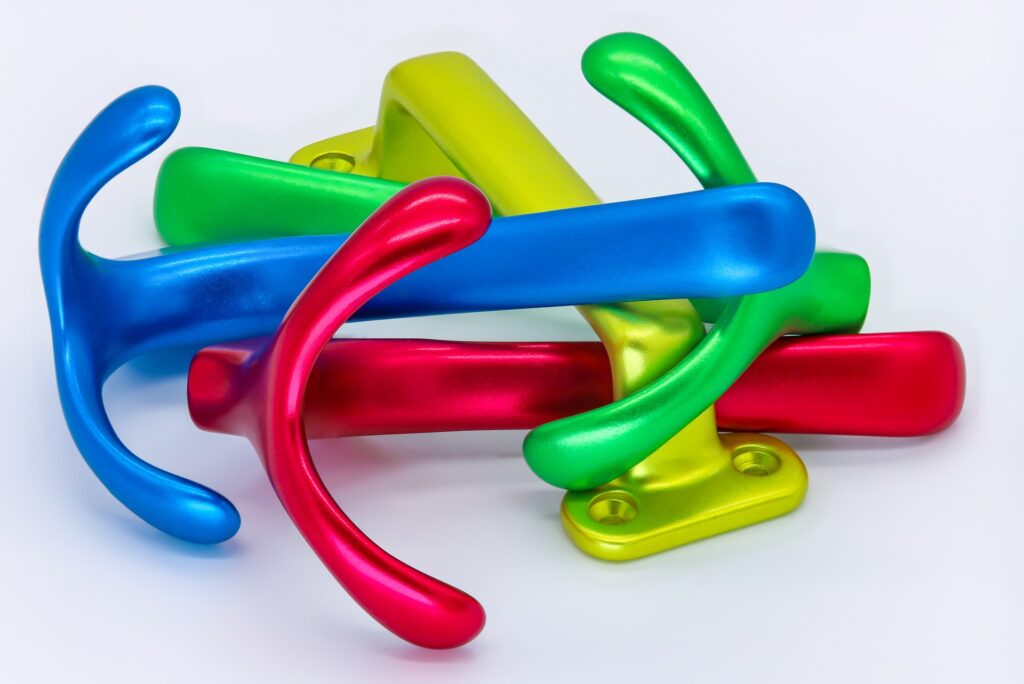Design & Developed by Themeseye

The importance and utilization of aluminum are steadily rising across various industrial sectors due to its favorable properties. However, aluminum’s natural properties can be improved by anodizing the metal, which creates a more durable, corrosion-resistant, and wear-resistant surface. However, aluminum’s natural properties can be improved by anodizing the metal, which creates a more durable, corrosion-resistant, and wear-resistant surface. Anodizing is an electrochemical process that is widely used in the aerospace, automotive, and industrial manufacturing industries. This process produces a protective oxide layer on the surface of the metal, which can improve appearance and resistance to wear and tear. This blog will provide a quick guide to the anodizing process for aluminum and present eight crucial tips that can lead to successfully anodizing aluminum.
Producing anodized aluminum works best with certain aluminum alloys, such as 6061 and 6063. These anodized metals contain a high percentage of aluminum and other elements that enhance the anodizing process. However, some alloys, such as 2024 and 7075, may not be suitable for anodizing due to their high copper content, which can cause discoloration during the process.
Before anodizing aluminum, it is essential to clean the surface thoroughly to remove any contaminants, such as dirt, oil, or grease. Any residue on the surface can affect the quality of the anodizing and lead to defects in the finish. Therefore, it is recommended to use a degreaser and a solvent to clean the surface and ensure that it is free from any debris.
There are two main types of anodizing methods: sulfuric acid anodizing and hard anodizing. Sulfuric acid anodizing is a widely used method that produces a thin and porous oxide layer on the surface of the aluminum. Hard anodizing, on the other hand, produces a thicker and more durable oxide layer that can withstand wear and tear. Choose the right anodizing method depending on the desired finish and application of the aluminum.
The temperature and concentration of the anodizing solution play a crucial role in the anodizing process. The temperature should be maintained between 20°C and 25°C, while the concentration of the solution should be around 15% to 18% sulfuric acid. Any deviation from these parameters can affect the quality of the anodizing and lead to defects in the finish.
The current density is the amount of electrical current flowing through the anodizing solution per unit area of the aluminum surface. Controlling the current density is essential to ensuring a uniform oxide layer on the surface of the aluminum. The recommended current density for sulfuric acid anodizing is between 12 and 15 amps per square foot, while for hard anodizing, it is between 24 and 36 amps per square foot.
Anodized aluminum can be colored using a dye. It is essential to choose the right dye depending on the desired color and finish. Organic dyes are commonly used for anodizing aluminum, as they produce bright and vivid colors. Inorganic dyes, such as metal salts, can also be used, but they produce more muted colors.
After anodizing aluminum, it is essential to seal the surface to improve its corrosion resistance and durability. Sealing involves closing the pores in the oxide layer using a sealant, such as nickel acetate or hot water. Sealing also helps to improve the adhesion of any subsequent coatings or paints on the surface.
Anodized aluminum is a delicate surface that can be easily damaged by scratches, abrasions, or chemicals. It is essential to handle the anodized surface with care and avoid exposing it to harsh environments or abrasive materials. Use soft cloths or brushes to clean the surface and avoid using abrasive cleaners or solvents that can damage the finish.
Anodized aluminum is widely used in various industries, including aerospace, automotive, construction, and consumer goods. Anodized aluminum is also used in consumer goods, such as smartphones, tablets, laptops, and kitchen appliances, as well as in sports equipment like bikes, golf clubs, and fishing reels.
Anodizing aluminum is a process of electrochemically treating aluminum to increase its resistance to corrosion and to make it harder and more durable. The anodizing process requires a specific temperature range, a specific voltage range, and the use of the right anodizing solution. It is also important to prepare the aluminum surface, rinse and clean the aluminum after the anodizing process is complete, and choose the right finish for the job. Finally, it is important to test and inspect the finished product to ensure that the anodizing process was successful. Following these eight important tips will help to ensure a successful anodizing process and a high-quality finished product. Contact us to learn more about anodizing aluminum.